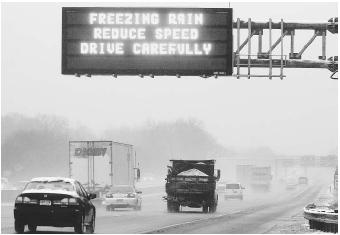We began first period this morning with a recording of a thundering rainstorm until we needed some disco music to wake us up. Students started with some sorting cards about solids, liquids, and gases. Once sorted, they copied this information into their notes, re-checked their homework assignment dealing with that topic assignments, and then we went over their answers. Because of the shortened schedule this is the same material we covered in second and fourth.
In first, because the period was longer, we also discussed the meaning of density, the effects of density, and how to calculate density.
Density is how close together the particles are in a substance. If they are close together the substance is more dense. If the particles are far apart, the substance is less dense. Because densities differ, you can make a density column like the one pictured to the left. I will be demonstrating one the next time we have class.
We also discussed colligative properties. Adding solutes to a solution changes basic properties like melting points and boiling points, no matter what solute is added. A perfect tie-in for today. Salt is put on our roadways to LOWER the freezing point of water to about -4*C. Because the freezing point is lowered, the ice appears to melt and stay liquid, thus making our roads less icy. They do not salt the roads in places where the normal daily temperature is below 0 because the salt would have little effect.
Because it doesn't matter what the solute is, sugar could be used for the same purpose - it is just a lot more expensive! To read more, click here.
Tonight's homework is boxes F & G on the green sheet and to the density stuff on the back of Monday's homework. (it's a full page with the jars on the front)
If we miss school tomorrow students should complete the "Stranded" half sheet and the "Phases/PC sort" sheet. They should also work on B and I on the green sheet.










No comments:
Post a Comment